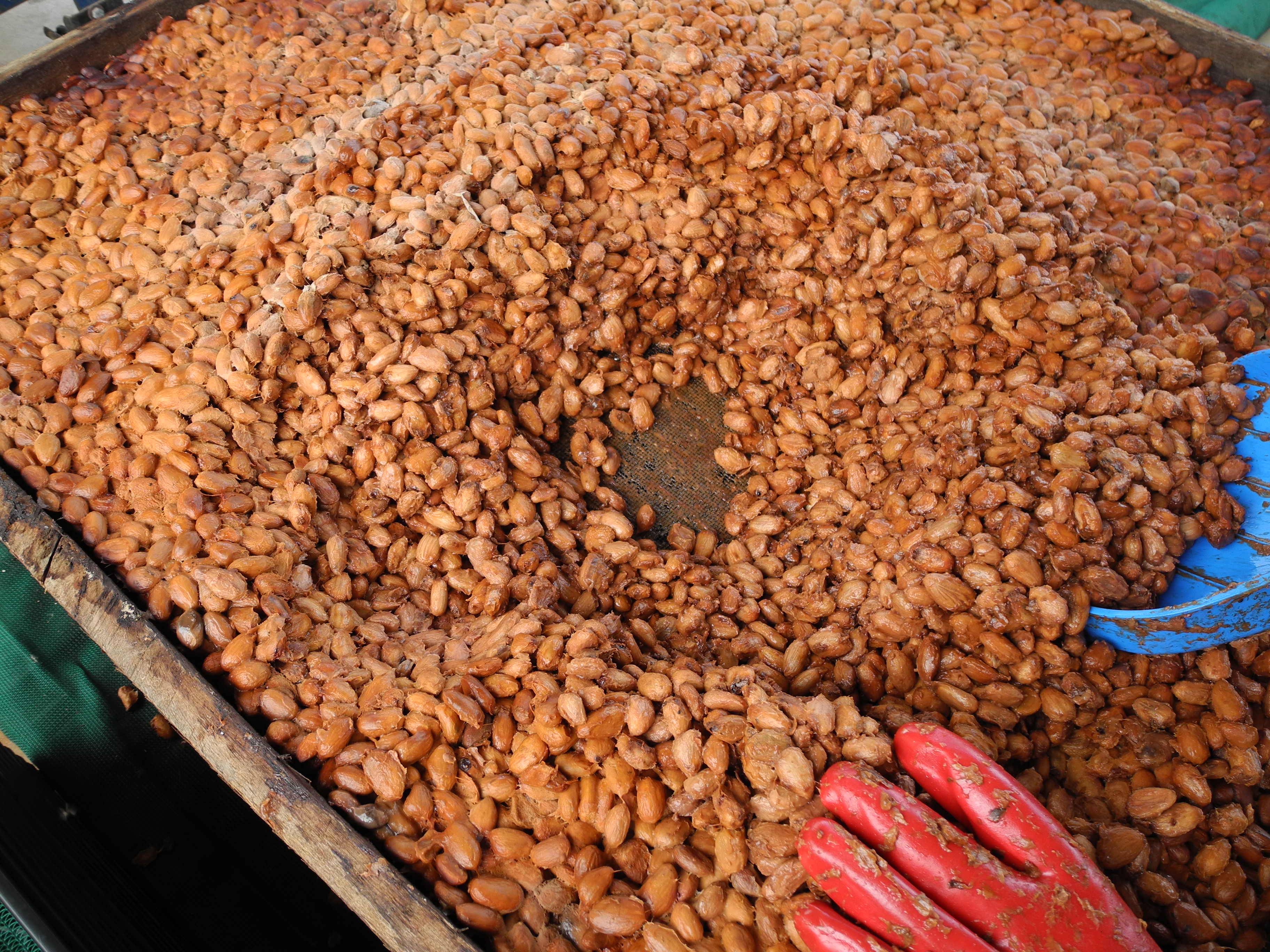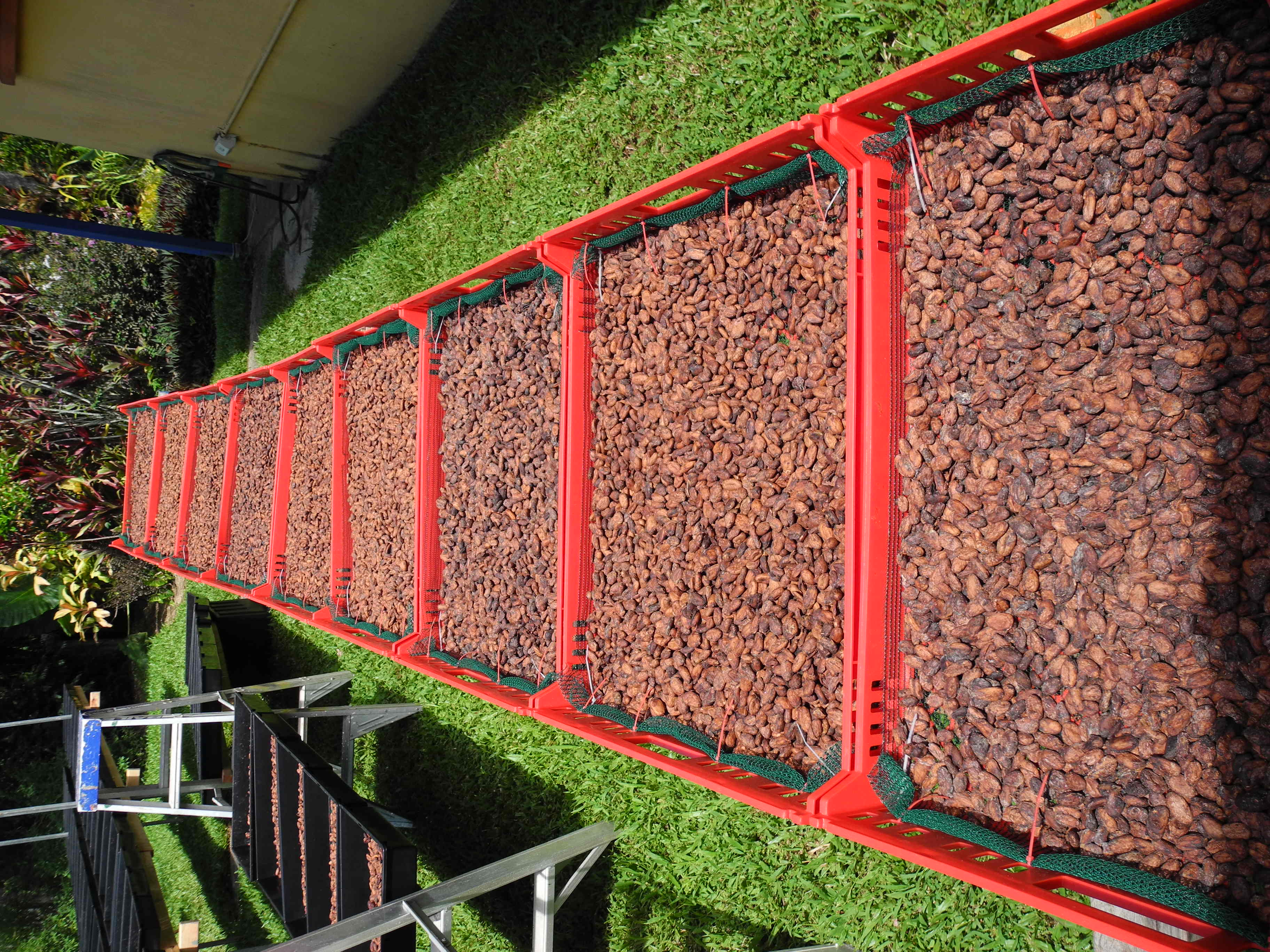Why is chocolate fermented?
4th Aug 2020

Why is my chocolate fermented?
Cocoa is fermented; along with rice, wine, beer, coffee, some tea and other foods.
Does this mean chocolate is alcoholic? - Well NO
What is fermentation of cocoa?
It’s the natural process where the outer whitish fibre of the cocoa bean dissipates, leaving the naked cocoa bean which is then ready for drying and roasting.
Getting a bit technical
From Australian Rural Industries Research and Development Corporation ‘Producing Cocoa in Northern Australia’ By Rd. Yan Diczbalis, Principal Horticulturist, Principal Horticulturist, Queensland Department of Agriculture and Fisheries, Centre for Wet Tropics Agriculture
‘Development of good cocoa flavour is dependent on the fermentation process. Good quality cocoa beans which are not fermented well do not have the flavour development necessary for manufacturing good quality chocolate. Beans which are poorly fermented often develop off-flavours or have high acidity.
Ghana cocoa is widely regarded as the world’s best quality ‘bulk’ cocoa. It has a reputation for good and very consistent flavour attributed to a diverse, diligent grower base and a national quality assurance and marketing system. It provides a ‘standard’ against which other cocoas can be benchmarked. Conversely, much cocoa from Indonesia and South East Asia is of low and variable quality due to poor or non-existent fermentation practices.
Some good quality Asian cocoa is produced from particular estates or regions where fermentation and drying are well managed.
Although fermentation is a complex process, the traditional techniques are simple and only basic hardware is required. The most primitive method is to wrap a ‘heap’ of cocoa beans in banana leaves. A slightly more sophisticated technique is to use specially constructed baskets or trays. However the most common technique used in larger plantations is to use slatted hardwood boxes which allow aeration and drainage of liquid ‘sweatings’.
In all cases, the fermenting beans are periodically ‘turned’ which aerates the mass of beans. Fermentation is generally conducted over 5–7 days.’
In practice things can and do go wrong, but if everything goes right the end result is cocoa of outstanding flavour. The challenge of course is to get everything right every time.
So what can go wrong?
Mostly it’s to do with temperature, which has a big effect on the success of the fermentation.
Here at Mission Beach we are at the southern end of the latitude range for growing and processing cocoa. Our challenges are mostly to do with low winter temperatures.
The most successful fermentations occur when the active fermentation starts almost immediately after the pods are opened and the beans extracted. It is then natural fermentation process where wild yeasts in the air and on the cocoa pods react with the sugar component of the fruit.

The fermentation cycle
At the beginning the bean mass will be at ambient temperature-this could be 20C in winter or 35C in summer. As the ferment starts the temperature of the mass increases.
Good fermentation happens at above 45C. So therefore, in winter we need to rise by 25C in summer by only 10C. At 45C temperature the ‘right’ yeasts are at work. At lower temperatures bad yeast and bacteria take over potentially contributing to ‘off’ flavours.
So, in winter heat pads are used to wrap the fermentation vessels, or alternatively they are placed in heated spaces. Either works well.
Once the temperature is at the 45C point it remains there for around five days before declining; at which point different, undesirable yeasts and bacteria start to multiply. So it’s imperative to stop the fermentation at this exact point.
Fermentation is stopped by putting the beans out in a thin layer no more than two beans thick for drying.
So, the bad yeasts have been tamed. The dried fermented beans are now in perfect condition for the next 8 steps to produce Charley’s fine chocolate!

